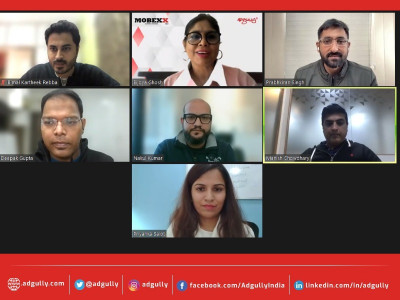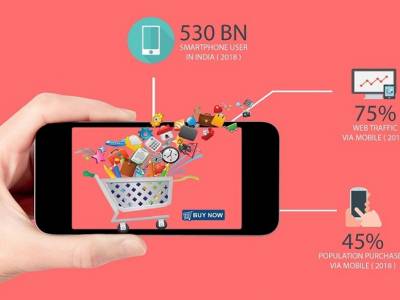Marketing trends in m-commerce space post-pandemic: Angela Toppo
Authored by Angela Toppo, Vice President- Marketing, Kult App
Smartphones and high-speed internet are no more a luxury in the post-pandemic world; they are a necessity. In December 2019, the market research firm techARC reported that India had 502.2 million smartphone users. Currently, India has over 1.2 billion mobile phone users and 600 million smartphone users. Increased internet penetration and low data rates have led to the drastic growth of mobile commerce. Realizing the potential of m-commerce in addition to the existing e-commerce ecosystem, the brands have placed their bet on the shopping apps and provided easy-to-browse catalogs and hassle-free checkout processes. Marketing trends in the m-commerce space have witnessed remarkable trends post-pandemic and it requires a thorough look to understand its implications.
Hyper-personalized marketing
Mobile phones have accelerated the trends of personalized marketing at an impeccable pace. As per a report by McKinsey and Company, it has been determined that 71 percent of consumers expect companies to deliver personalized interactions. As time is the new currency in the post-pandemic era, consumers are expecting a higher exchange of value in return for the time they are investing in shopping.
As a result, brands that are providing a compelling hyper-personalized experience have encouraged customers to pay an additional 16 percent premium on products and services.
Mobile Apps for shopping
There has been a change in the way consumers are using mobile phones for shopping purposes. No matter how mobile-friendly a website is, about 85% of consumers are opting for mobile shopping apps for their shopping needs. There is a higher percentage of consumers who would use the app to explore and know more about the product. Mobile apps are going to be the future of m-commerce marketing as they eventually lead to a 157% higher conversion rate in comparison to a regular website visit.
Increased use of social media for m-commerce
Multiple brands across sectors have leveraged social media channels to gain exposure, raise brand awareness and improve e-commerce business. Much recently, social media platforms like Facebook and Instagram have introduced shoppable posts and policies to encourage potential customers to direct towards buying the products. Developing modular ways to navigate a social media user towards the product page such as usage of tags, direct buying links within the app, and development of social posts that inspires confidence towards the brands have led to increased traffic on the products page. Businesses can now tag products in a similar manner to tagging an individual for the posts.
Certain posts now show the option of "View Products" which directs the user to the product’s page and with pre-inserted information related to the individual’s name, email address, and delivery address, the transaction is completed within seconds. Increased use of m-commerce has only accentuated the social shopping trends.
Banking on Augmented Reality (AR)/Virtual Reality (VR)
Revolutionary advancements in the field of Augmented Reality (AR)/Virtual Reality (VR) have enabled mobile shoppers to replicate counter-shopping right in the comfort of their beds. Users can now personalize and try a spectrum of products with a few touches on the screen. There has been an increased emphasis that has been given to providing realistic experiences and developing integrated platforms in mobile apps. As per studies, an estimated $1.6 billion of $35 billion AR and VR market will be utilized for retail purposes by 2025.
For the consumers residing in Tier-II and Teir-III cities, it will prove to be a boon to pick the right product for the first time and contribute a sizeable number of sales for the brands.
Mobile Chatbots for everything m-commerce
No doubt, chatbots have become relatively advanced to carry interactions just like a real individual on the other side of the trade would do. In a bid to improve customer service and experience, several brands will be leveraging chatbot technology for mobile platforms. This will help the users to address their issues round the clock without having to wait for the assistance of a customer service representative.
More Mobile Payments – A focus on safety and experience
Over the past few years, e-payments have been increasing in popularity. In India, mobile commerce is set to become the primary payment method for online shopping. Recent reports indicate that 46 percent of transactions are already done through this method. Consumers are preferring a quick, safe, and secure way for them to shop. According to Statista, the mobile payment volume has witnessed an annual growth of 62%. Therefore, there has been an increased integration of mobile wallets in the shopping app to facilitate the consumers for a smooth transaction experience. Users can also choose their preferred payment method that is fast and safe.
Key Learnings
Brands have to mark their presence where their potential consumers are. Consumers are becoming inseparable from their mobile phones and more users are preferring m-commerce to satisfy their shopping needs. The current business milieu needs to adapt to the rapidly changing m-commerce ecosystem that is leaving traditional mediums. Marketers are tapping into the increased mobile phone usage of consumers to gain valuable insights into their behaviors and preferences. Therefore, there is a need to have app-first insights and a relative advertising strategy to optimize consumer media planning, buying, and targeting.
For retailers to capture the mobile-first market space, there is a need to embrace the trends that are leading to more sales and better brand presence. Maintaining a competitive edge in terms of developing consumer-centric mobile apps will lead to the mutual benefit of the consumers and the brands.
















Share
Facebook
YouTube
Tweet
Twitter
LinkedIn